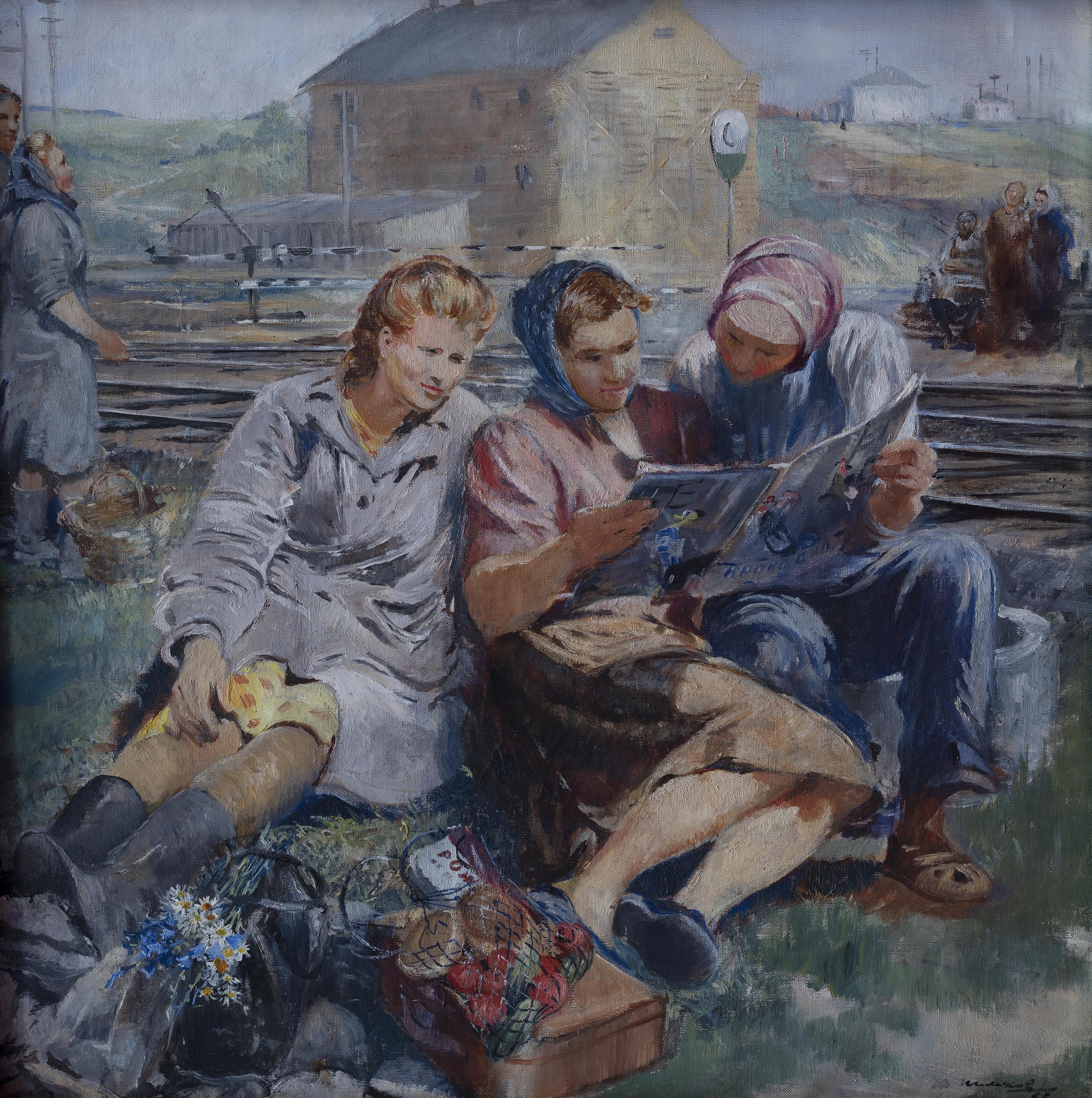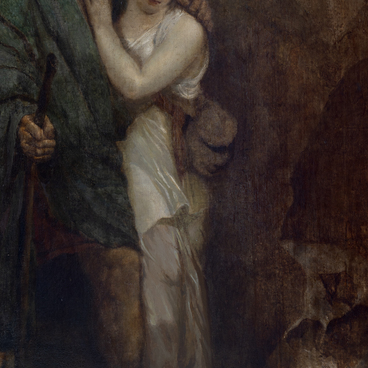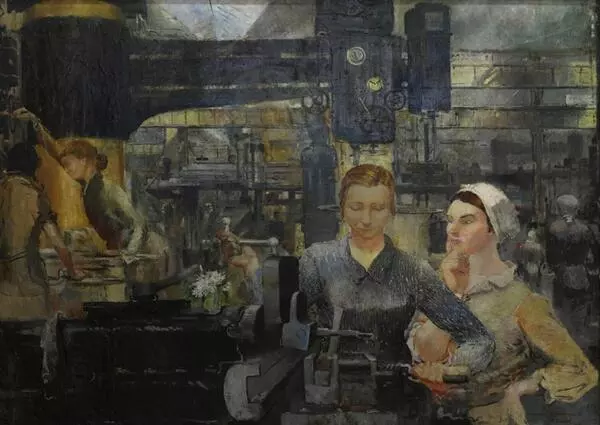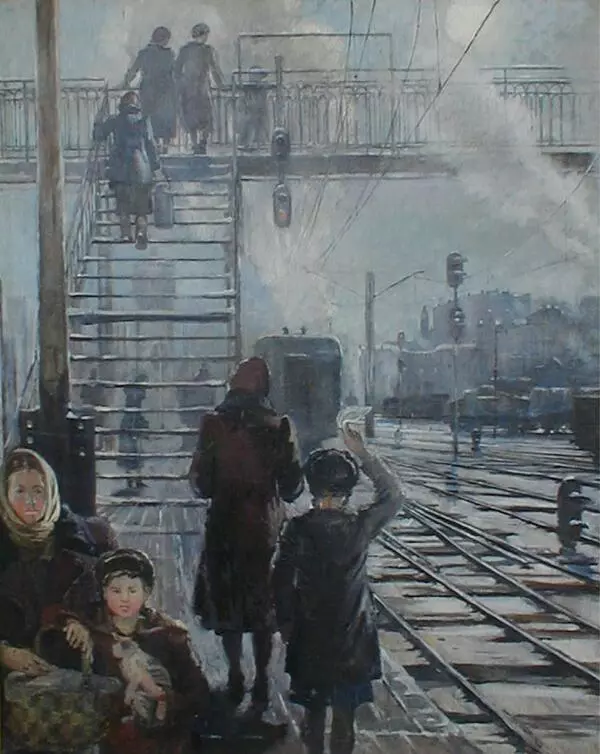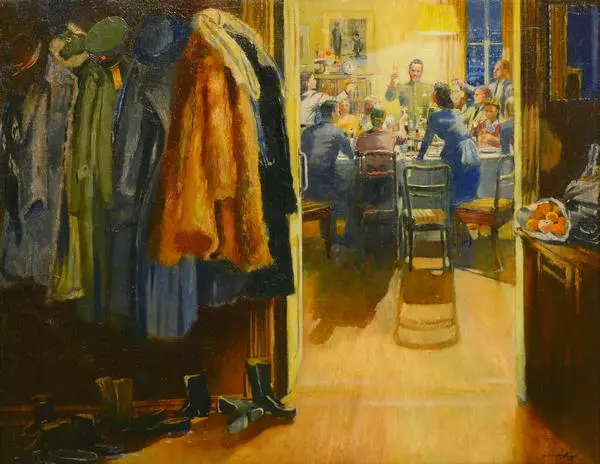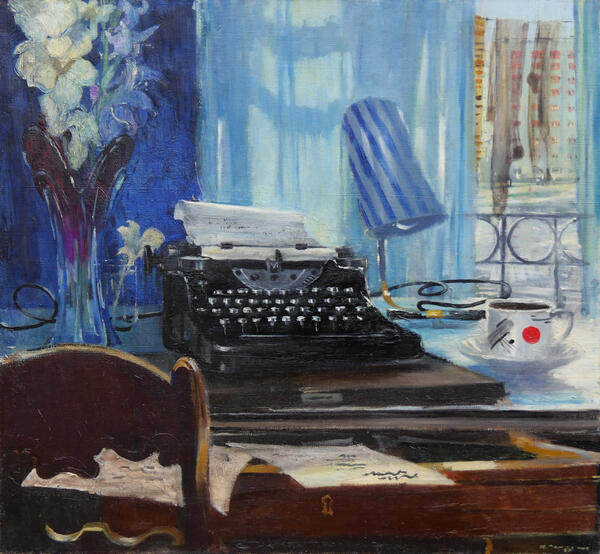Yury Ivanovich Pimenov — a famous painter, laureate of many soviet prizes, People’s artist of the Soviet Union, stage and theatre designer, professor. The dominating theme of Pimenov’s paintings, made after World War II, is day-to-day peaceful life, which is another reminder of the horrible war people lived through. The art of Yury Ivanovich Pimenov is about the beauty of routine things, about the value of every moment of life and that each of such moments is worth to be memorized.
The artist looked for positive images everywhere — in streets, at construction sites, in markets, at railway stations and in homes. He admired his contemporaries, showing them in their regular setting, from the observer’s viewpoint. The subjects of his paintings are simple, optimistic and lyrical. Before WWII he started working in his interpretation of a woman image and developed it in the 1950-ies. Women in his paintings are strong and down-to-earth; they are involved in all spheres of life, they drive cars and build houses. At the same time, they are feminine and charming.
The subject of Waiting for a Train is something the painter saw by chance, but it produced a great impression on him. Women going back from work are sitting on the grass waiting for the train. Despite their working clothes (robes, trousers, boots and kerchiefs on their heads), Pimenov is fascinated by their femininity. Their postures, gestures, manners are gracious and bear no trace of workers’ brutal force. Their faces and figures are lit by the bright sun. In front of them, there are food bags and a small bouquet of daisies and cornflowers — a tender accent, which gives the routine a note of poetry. While waiting for the train the women are reading an issue of Crocodile, a satirical magazine very popular in the Soviet time. The magazine was issued three times a month; its circulation reached 6.5 mln.
The painter expressly put his characters at the forefront with railway and station facilities at the background. In the distance, there are other figures of people waiting for the train. The painter deliberately avoided any portrait likeness; he depicted a collective image of a woman, a housekeeper, a life-builder, a worker — which is common of many works by Yury Pimenov.
The artist looked for positive images everywhere — in streets, at construction sites, in markets, at railway stations and in homes. He admired his contemporaries, showing them in their regular setting, from the observer’s viewpoint. The subjects of his paintings are simple, optimistic and lyrical. Before WWII he started working in his interpretation of a woman image and developed it in the 1950-ies. Women in his paintings are strong and down-to-earth; they are involved in all spheres of life, they drive cars and build houses. At the same time, they are feminine and charming.
The subject of Waiting for a Train is something the painter saw by chance, but it produced a great impression on him. Women going back from work are sitting on the grass waiting for the train. Despite their working clothes (robes, trousers, boots and kerchiefs on their heads), Pimenov is fascinated by their femininity. Their postures, gestures, manners are gracious and bear no trace of workers’ brutal force. Their faces and figures are lit by the bright sun. In front of them, there are food bags and a small bouquet of daisies and cornflowers — a tender accent, which gives the routine a note of poetry. While waiting for the train the women are reading an issue of Crocodile, a satirical magazine very popular in the Soviet time. The magazine was issued three times a month; its circulation reached 6.5 mln.
The painter expressly put his characters at the forefront with railway and station facilities at the background. In the distance, there are other figures of people waiting for the train. The painter deliberately avoided any portrait likeness; he depicted a collective image of a woman, a housekeeper, a life-builder, a worker — which is common of many works by Yury Pimenov.
